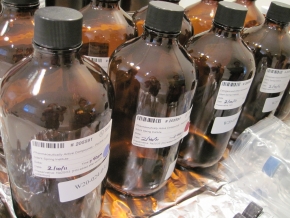Private drinking water wells

Private wells are often shallower than large volume public supply wells and thus more vulnerable to contaminants. What’s more, unlike public supply wells, private wells are not regulated under the US EPA's Safe Drinking Water Act and many well owners do not regularly test their well water quality.
In addition to conventional pollutants like nitrate and coliform bacteria, in previous work we showed that septic systems can be sources of organic wastewater compounds (OWCs), such as pharmaceuticals, personal care products, and organophosphate flame retardants. Some of these contaminants are endocrine disrupting compounds (EDCs) that can alter hormone signaling in the body. For instance, we found 18 OWCs in public supply wells on Cape Cod, Massachusetts, a region served by a sand and gravel aquifer where 85% of residents rely on onsite wastewater treatment systems.
Our research aims to provide a better understanding of the characteristics of private water wells that are most likely to contain OWCs, with the ultimate goal of informing better source water protection and drinking water quality monitoring.
Funded by
News & Updates
2020
A free online tool by Silent Spring helps private well owners interpret their water testing results and reduce their exposures.
2016
Septic systems likely source of contamination, study finds
2011
Results demonstrate widespread impact of wastewater, primarily from septic systems, on Cape groundwater and drinking water.